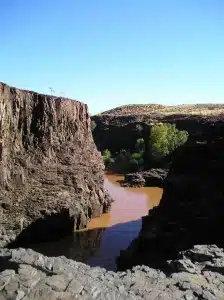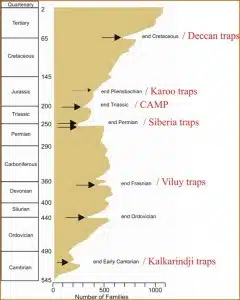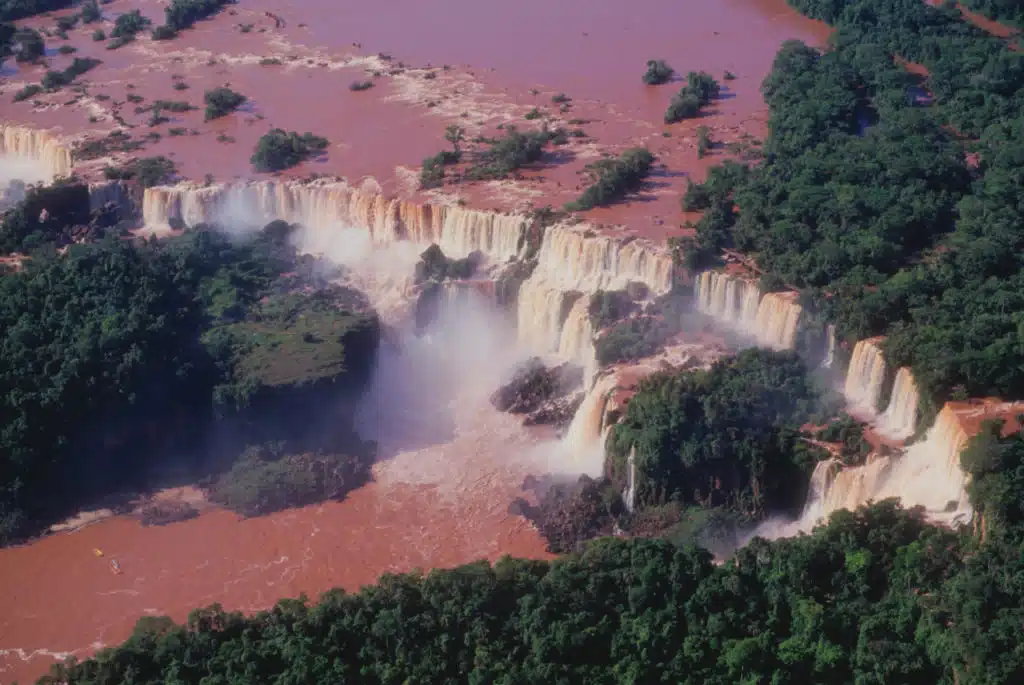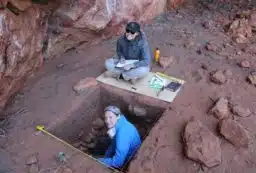
Lava flows in Australia. Credit: Fred Jourdan courtesy of L Evins, formerly at University of Western Australia.
A Curtin University researcher has shown that some ancient periods of massive eruptions released green house gases so quickly that they caused rapid climate change and mass extinctions.
But today we are adding carbon dioxide to the atmosphere faster than even the most rapid sequence of eruptions.
“We have carefully dated minerals contained in the volcanic rocks and shown that only the fastest sequences of eruptions caused significant species extinctions,” says Dr Fred Jourdan who works as part of an international team.

Fred in the lab using the laser to date minerals. Credit: Fred Jourdan, Curtin University of Technology
“To understand the long-term climatic and biological effects of the massive injections of greenhouse gas in the atmosphere by modern society we have to understand how climate was affected in the past,” he says.
For years, a controversy has raged about whether mass extinctions over the last 550 million years were caused by the impact of giant asteroids or by huge volcanic eruptions.
“Both mechanisms can release a colossal amount of greenhouse gases. The key to discriminate between these two possibilities is to see if there is a link between the timing of mass extinctions and geological events.”
Using radioactive dating techniques, Fred and his colleagues determined the age, duration and rate of volcanic activity of three major volcanic provinces. “We studied massive eruptions, each covering an area the size of Western Australia, in Africa, Australia and the continents now surrounding the Atlantic Ocean.
“Our results demonstrate that volcanism in the Australian and Circum-Atlantic provinces occurrred very quickly, over a period of one or two million years, at the same time as a major mass extinction. This implies that volcanic gases had strongly affected the climate and life at that time.”
“Although the Southern African eruption produced a similar volume of volcanic rock and released a similar volume of gas, we showed that this eruption was spread over 4 million years and did not correspond to a time of mass extinction.”

Graph showing the correlation between species extinction and large volcanic events. Credit: Fred Jourdan, graph modified from L. Evins, formerly at University of Western Australia
“This work suggests that most species can withstand climatic changes produced by volcanic eruptions provided they have time to adapt,” Fred says.
Fred Jourdan is one of 15 early-career scientists presenting their research to the public for the first time thanks to Fresh Science, a national program sponsored by the Federal Government.
Other stories released today:
- One step closer to treat cancer via gene-silencing; and
- Owl CSI – feathers and DNA reveal night secrets.
For further information, contact Niall Byrne on 0417 131 977 or Fred Jourdan on F.Jourdan@curtin.edu.au.
For Fresh Science contact: Sarah Brooker on 0413 332 489 and Niall Byrne on 0417 131 977 or niall@freshscience.org.





 Fresh Science is on hold for 2022. We will be back in 2023.
Fresh Science is on hold for 2022. We will be back in 2023.